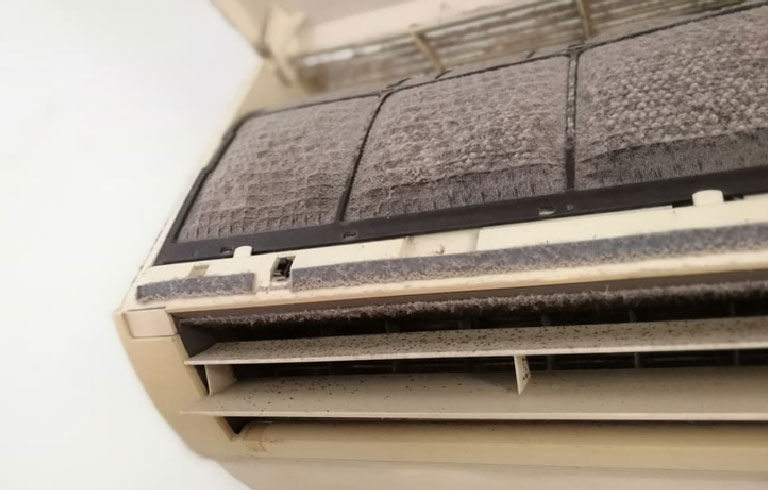
Moulds exist all around us, they can be found almost everywhere. When we come in from outside, mold spores follow. When we open the window for fresh air, mould spores float right in. Ranging from 4 to 20 microns in size, they require the best in air filtration to completely remove the spores from an environment. Some moulds produce mycotoxins that can lead to detrimental health impacts, these are the moulds we want to quickly identify and irradicate. Once mould takes hold in an environment, air filtration alone is insufficient to remove it, sanitation and remediation may be necessary.
Tell-tale signs of mould
Stale or foul smells from air conditioning systems. High humidity is air conditioning units provide an ideal environment for mould growth

Damp and stained areas are usually prime locations for mould growth and should be checked frequently

- Spots or fuzzy textures on walls or other surfaces. Moulds come in all shapes, sizes, and colours so any unusual growth on surfaces should be investigated immediately.
- Persistent musty odour in a specific area even with regular cleaning. If you’ve washed the carpet, steamed the curtains, and taken out the trash without dislodging the strange reek, it could be mould.

- Cold or allergy symptoms after spending time in a specific room or area could be the result of a mold problem. If symptoms only get worse in a particular room it could easily guide you to your problem.
Remediation vs Sanitation
Mould remediation is the removal of mold-contaminated materials in order to find and fix the moisture or water source that is actually causing the mould. This can often mean cutting away construction materials to find the underlying source.
Mould sanitation is done by using a biocide to clean the surface from mould and lower the microbial count without removing materials.
To decide what kind of method to use, you will need to determine the level of contamination. According to the U.S Environmental Protection Agency, if there are more than 10 square feet of visible mould it should be remediated. There could be more invisible mould, hidden behind wallpaper or paneling. Remediation will be the more expensive method to remove the mold, however, it will ensure 100% removal of all contaminated surfaces. This may be especially important for highly toxic moulds that could pose an immediate threat to those living or working within the contaminated area.

Sanitation is also an option for smaller contaminations or if the growth is spotted early on. By using a biocide or mould remover and a microfiber towel it is possible to remove the growth. However, on porous surfaces, there is a chance the mould sinks into the pores and resists inactivation. Thus, it is important not only to apply biocide and clean a surface but to dry it completely and reduce the moisture levels to below 20% to prevent any regrowth of the mould on the surface.
Although mold is a serious issue that must be resolved, the reality is that, in many cases, remediation is unnecessary, and sanitization could suffice. If it is appropriate to use sanitization instead of remediation, the process is faster and more cost-effective When you discover mould, the first thing you should do is have a professional come out to perform a mould inspection. You can’t tell the extent of the mould damage on your own, and you never want to accidentally underestimate how much mould you have. Professionals will also be able to perform tests to see what type of mould you have. This is extremely important since if you have a toxic mould, you’ll need to remediate mould immediately.
What’s Next?
Check out our other services or know more about our mold cleaning services in Singapore.

 Synthetic or Natural Rugs? Which should you pick?
Synthetic or Natural Rugs? Which should you pick?